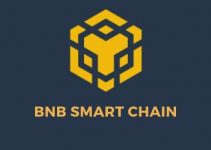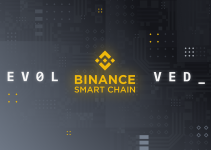Table of Contents

A blockchain oracle is a mechanism that connects blockchains to real-world data, systems, and computations. Oracles allow smart contracts to interact with external inputs and outputs, allowing decentralized applications to respond to real-world events. For example, oracles can fetch live cryptocurrency prices for DeFi protocols, deliver sports results for betting platforms, or provide weather data for decentralized insurance.
Why Do Blockchains Need Oracles?
Blockchains achieve their strength through decentralization and deterministic processing, but these characteristics also limit their ability to access external data. Smart contracts, by their very design, operate in solos. Without oracles, such contracts would lack the real-world context necessary to function optimally.
Oracles provide this missing link by fetching data from external sources, such as APIs, databases, or IoT devices, and delivering it securely to smart contracts. This interaction is bidirectional: oracles can also send data from blockchains to external systems, such as triggering a payment in a traditional banking system or updating an external database.
How Do Blockchain Oracles Work?
Blockchain oracles function as middleware between on-chain and off-chain environments. Oracles can either be push or pull. Here’s a breakdown of their mechanics and differences:
Push Oracles
Push oracles operate on a predetermined schedule or trigger condition to update prices on-chain. These updates are managed by permissioned operators who interact with a smart contract storing the current price. For example, operators might commit to updating prices every 30 minutes or when a price moves by 1%.
This periodic approach ensures that the on-chain price is regularly refreshed, even if no user is actively accessing the data. However, this mechanism comes with drawbacks, such as incurring gas costs for every update and updating prices unnecessarily when no application is utilizing the data.
Pull Oracles
Pull oracles update prices only when explicitly requested. Users or applications can prompt an update through on-chain or off-chain interactions. Some pull oracles rely on a two-transaction flow: one transaction requests data, and the oracle responds in another transaction.
This design allows applications to perform a single transaction that both updates the price and executes the required application logic, streamlining the process.
Key Comparisons: Push vs Pull Oracle
| Push | Pull | |
| Frequency | Update at fixed intervals. | Can update prices much more frequently. |
| Latency | Higher latency | Higher update frequency means lower latench |
| Support | Support fewer blockchains due to the ongoing gas costs of periodic updates across multiple chains | On-demand model scales better and can support a broader range of blockchains. |
| Variety | Gas costs limit a push oracle’s ability to provide a wide variety of price feeds | Can support an extensive range of feeds since updates are only triggered when needed. |
The Blockchain Oracle Problem
The blockchain oracle problem highlights a fundamental challenge in integrating off-chain data with blockchain systems. Blockchains are designed to be deterministic, meaning every node in the network must reach the same conclusion based on identical inputs. Introducing external data, which can vary based on the source or timing, risks breaking this determinism.
On top of that, centralized oracles can also create a single point of failure for the overall network. If a centralized oracle is compromised or delivers inaccurate data, it could compromise the integrity of the entire system.
Decentralized oracle networks (DONs) have emerged to address this problem. By using multiple independent nodes to fetch, validate, and aggregate data, DONs reduce the risks of manipulation, downtime, and inaccuracies, ensuring trust in the data provided.
Key features of DONs include:
- Redundancy: Multiple nodes fetch and verify the same data, reducing reliance on a single source.
- Aggregation: Data from various sources is processed and aggregated to ensure accuracy and consistency.
- Transparency: All operations are recorded on-chain, allowing users to verify the integrity of the data.
Applications of Blockchain Oracles
Oracles are instrumental in extending blockchain functionality to real-world use cases. Some key applications include:
- Decentralized Finance: Oracles provide real-time price feeds and interest rates, enabling automated functions like liquidations, collateral adjustments, and arbitrage opportunities in DeFi protocols.
- Insurance: Decentralized insurance relies on oracles to validate events like natural disasters or flight delays, enabling automated payouts without manual claims processing.
- Gaming: Oracles deliver randomness for fair gameplay and track real-world events like sports results for decentralized betting platforms.
- Supply Chain: Oracles integrate IoT data to ensure transparency and authenticity in supply chain operations, tracing goods from origin to destination.
- Enterprise Integration: Oracles allow businesses to interact with blockchains, enabling automated workflows such as payment processing, inventory tracking, and compliance monitoring.
Popular Blockchain Oracles
Here’s an overview of some of the most popular oracle solutions in the market:
Chainlink
Established in 2017, Chainlink is one of the largest and most widely used oracle solutions in the blockchain ecosystem. Chainlink offers a wide range of features, including data automation, VRF (Verifiable Random Function) for randomness, Proof of Reserve for asset verification, and Cross-Chain Interoperability Protocol (CCIP).
In addition to cryptocurrency price feeds, Chainlink provides data on weather, sports, FX, and commodities. Developers can also access external data sources using Chainlink’s AnyAPI adaptors, making it a versatile and robust oracle solution.
Pyth Network
Launched in 2021, Pyth Network is known for its innovative “pull mechanism” for price feed updates, where data is only published on-chain when requested. Pyth provides a decentralized off-chain aggregate price oracle, publishing data off-chain 2–3 times per second.Pyth uses a weighted average from multiple transparent and exclusive data sources to ensure reliability and accuracy.
Binance Oracle
Introduced in October 2022, Binance Oracle combines high-speed data delivery with enhanced security measures. It employs a Multi-Party Computation Threshold Signature Scheme, which involves multiple distributed nodes participating in the data signing process to ensure the safety and correctness of data.
By curating whitelisted and hand-selected data providers, Binance Oracle offers highly reliable and consistent data feeds. It positions itself as a hybrid solution between Chainlink’s on-chain/off-chain providers and Pyth’s off-chain-only model. Customized and open data provider support allows Binance Oracle to deliver tailored oracle solutions for specific use cases, making it an appealing choice for projects seeking stable and fast data services.
Band Protocol
Band Protocol is a Cosmos-based oracle network that supports 20 blockchains through the Inter-Blockchain Communication (IBC) protocol. It acts as a decentralized off-chain aggregator oracle. Band Protocol operates its own relayer network, ensuring fast cross-chain communication and seamless data publishing across multiple blockchains via the IBC bridge.
Conclusion
Blockchain oracles are essential infrastructure for the decentralized economy, enabling smart contracts to interact with the real world. By addressing the blockchain oracle problem, decentralized oracle networks are unlocking the full potential of blockchain technology, driving innovation across industries.


